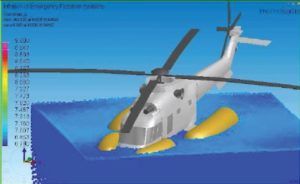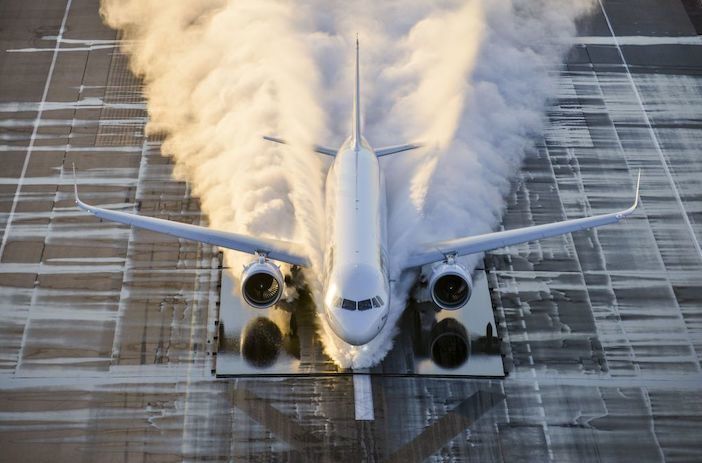Words by Rob Coppinger
Design, testing and manufacturing is increasingly done in the digital realm, but recreating the nightmare situation of ditching an aircraft in water still requires physical tests.
The rare event of an aircraft ditching caught the headlines in January 2009 when US Airways Flight 1549 successfully belly landed in New York City’s Hudson river after a bird strike stopped both engines. Aircraft have long been tested for ditching and the techniques and technology used in the process continue to evolve.
In March 2020, six months later than expected, an EU project to advance the simulation and testing of aircraft ditching will come to an end. The €6.5 million (US$72 million) SARAH project (increased safety and robust certification for ditching of aircraft and helicopters) is aiming to improve the safety of ditching for fixed wing aircraft and rotorcraft. There is a link between the infamous ditching event of January 2009 and the research project. “The event is part of the motivation for this project,” says Stephan Adden, CEO of the SARAH’s coordinating company, Hamburg-based IBK Innovation.
Ditching is part of an aircraft’s certification. Regulatory authorities need to be satisfied that after ditching an aircraft will remain intact and afloat, that passengers and crew can escape and that the manoeuvre is unlikely to cause injuries. SARAH has another link to the Hudson river ditching, the US Airways aircraft was an Airbus A320. “Airbus is also part of the project and we have a strong connection to Airbus for 15 years, including activities on ditching and numerical simulation,” Adden says.
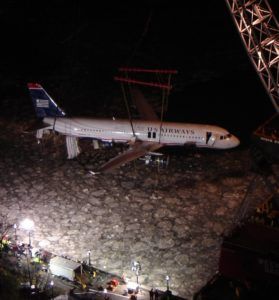
Virtual complexity
SARAH used two test centres, one in Italy and one in France. Testing in Italy included several campaigns from June 2018 to June 2019. SARAH’s researchers are focusing on developing ways to improve the physical and virtual methods of testing an aircraft’s behavior when it is ditching. Each phase of the research and testing examines a different aspect of ditching, including one looking at high speeds, one examining deformation of the aircraft and another analyzing variable pitch, the angle at which the aircraft hits the water.
“One simulation does not tell us anything of value,” says Adden. “We need different conditions. We normally have some sort of off-test matrix or simulation matrix we have to go through.”
A holistic approach to simulation is needed to help improve the modelling. “We need to be able to do it without the simulation taking half a year,” he says. “The technical problem is so complex, because it’s multidisciplinary, that if we look at high-fidelity simulations, we still need to have four to six weeks of testing to validate one simulation.”
Test equipment was upgraded for SARAH to measure more data when the model specimen hits the water. “It’s the first time that we have tested double curvature specimens,” says Adden. A double curvature specimen is a model that is identical with the fuselage when it hits the water. All models are scale-models of aircraft, although the models are all of a similar size so they are appropriate for the water tank being used. The scale model’s results can be extrapolated mathematically for the full-size aircraft.
Physical models
Airbus is a participant in the SARAH project and the work in France saw helicopter models tested with and without mock emergency flotation systems. Airbus Helicopters stress engineer, Severin Halbout, explains what was measured in ditch tests: “We are focused on the impact phase and the loads that might happen during the impact. We chose at the beginning to have as a helicopter reference the Super Puma.”
However, the test model became a generic design because it is an EU research program and the results of which are made public. “The design is a generic shape and it is the heart of our work for the rotorcraft. The mock-up has a scale of one-third,” Halbout adds.
Ditch testing for certification of commercial passenger aircraft takes a different approach to the models. For certification they are built by craftsmen to be almost identical to the final design of the aircraft. Aerospace testing services provider Element conducts ditch testing of aircraft models in a water tank in the UK with civil engineering firm, H.R. Wallingford.
“We do the physical part, not the virtual testing. Just last year we completed ditch testing of the C919 for Comac in China,” says Element Materials Technology US aerospace product qualifications testing operations director, Stuart Brown.
Inside those physical models, sensors collect data to ensure the testing is reliable. “We’ve got a microsystem inside the model similar to that which is used in crash test dummies,” says Brown.
“It’s a small data acquisition system that sits inside the plane and captures all the data.” After the model has ditched, it is retrieved and a small hatch opened for it to be connected to a data logging system.
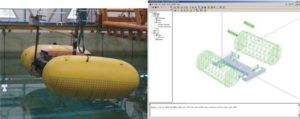
Waves on repeat
Ditch testing typically involves around 125 runs into the tank. Engineers are normally most interested in the acceleration of the model before it hits the water, but testing does assume a controlled landing on water. The number of runs, how the model is expected to accelerate and its angle to the water are specified by the aircraft’s designers and determine what needs to be measured. A test plan will state how many runs are needed and what types of setups will be carried out, for different angles of attack, for example.
Most of the runs that can be conducted will be in simulated calm water conditions. This helps engineers work out how to alter the setup for the model drop and to understand how the results change. Then the waves can be introduced. “We’re looking at how the model reacts when we’re landing it on the trough of the wave, on the face, on the rear of the wave, and on the peak of the wave. The very final test is we ditch into head seas,” says Brown. A head sea is a mass of waves coming directly at the front of the aircraft.
Targeting a specific zone of the wave for the model to impact is something that Airbus Helicopters also deems necessary. There is no fundamental difference between fixed wing and rotorcraft testing, they both need to know the forces acting on the fuselage on impact, depending on how that impact occurs. Halbout says, “Synchronizing correctly the instant you release the mock-up from the top of the launcher and targeting the impact to a specific zone of the wave is difficult.”
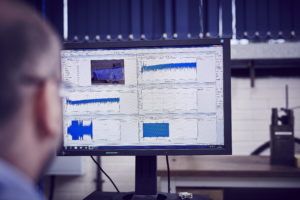
The attitude of the model to the wave on impact also needs to be adjustable with trim and yaw variations for fixed wing aircraft.
To control the path of the model to the wave, the aircraft can be fixed to a trolley on rails and accelerated as the trolley travels. The model is thrown off at the end of the rails and its arc to the water is carefully calculated. Another method is an over arching rig that controls the model’s descent and impact. Airbus mock-ups, Halbout says, can be up to 3m long and weigh up to 300kg.
The European manufacturer uses cameras to capture the models’ performance, including for the SARAH research project. “The model’s trajectory was followed by a high-speed camera system. We also had other cameras to provide other fields of view. In total there were seven cameras,” says Halbout.
Data increases
The SARAH tests involving Airbus included emergency flotation systems. Pressure sensors were built into the model’s inflatable floats and there was a load sensor under the bottom of its fuselage. There were also load sensors placed between the floats and the fuselage and inertia sensors inside the mock-up. Different flotation systems were designed and tested. Halbout says, “It was more than 50 or 60 channels to record with different frequencies. We also did experiments with only the fuselage,” Halbout adds. More than 200 tests were performed with the water calm or with different wave states. “Other parameters we varied was the nature of the flotation system. We performed the impact with rigid floats and inflated floats.”
According to Adden, fixed-wing aircraft have a special way of coping with challenging sea states:
“They cover them by having very conservative approach conditions for the speed, the rate of descent and a stable attitude.”
Helicopters are different because the stability of the helicopter is more important. Helicopters will capsize in water without a flotation system and so there is no benefit in the helicopter fuselage staying intact.
Ditch tests feature multiple high-speed cameras, sensors inside the models and on flotation systems. The amount of data is large and growing for projects like SARAH and companies like Element. “The big change for us is in the last ten years has been data acquisition,” says Brown. “We capture, record data and then use small logging systems to retrieve the onboard data.”
The data logging systems have allowed the number of runs to be reduced because of the increased quality of the data captured with each run, he adds.

a scale model and wave tank
The core methods for ditch testing are not changing in the immediate future, even though radical aircraft designs will be tested with them – SARAH also tested blended wing model (BWB) designs. BWB airliners promise dramatic reductions in fuel consumption. The SARAH work sought to understand how these broader fuselages coped with a ditch impact. “We also looked at unconventional configurations to understand if our current ditching simulation capabilities, which include a lot of knowledge and a lot of engineering judgments work,” says Adden. The BWB was found to skip across the water like a flat stone, unlike the traditional tubular aircraft which lands once.
For decades now, what has been understood about ditching is that with a controlled approach an aircraft can belly land, like in the Hudson River event, stay intact and its passengers and crew escape. What would help the industry is to understand how a testing process that can reach that conclusion confidently can be achieved without the expensive long test lead times and physical tank work.
SARAH is a step towards that and moves a costly part of the aircraft certification process into the virtual world. High speed cameras, modern instrumentation and data acquisition systems have also increased the quantity and quality of data. With the use of this data, simulation may increasingly provide a real alternative for physically testing such a rare event as ditching.
